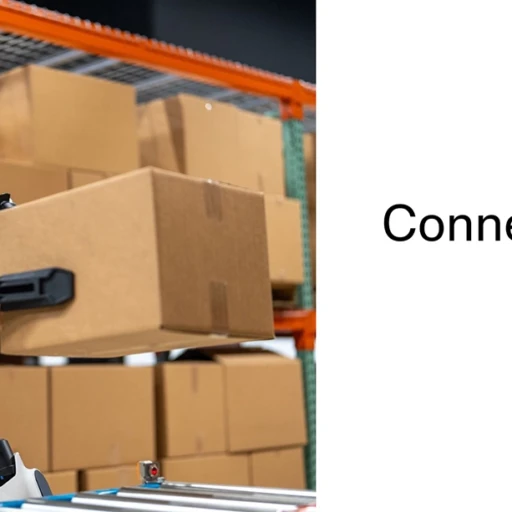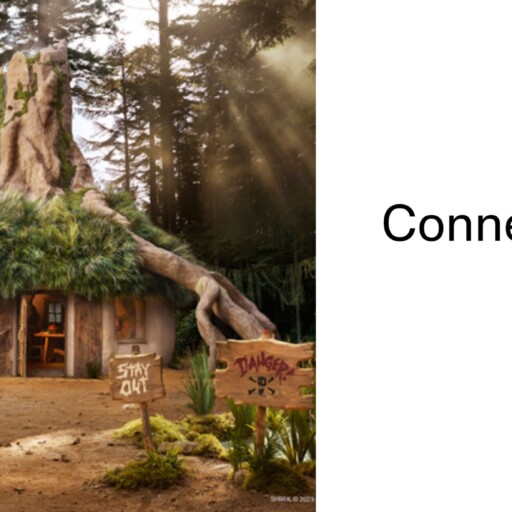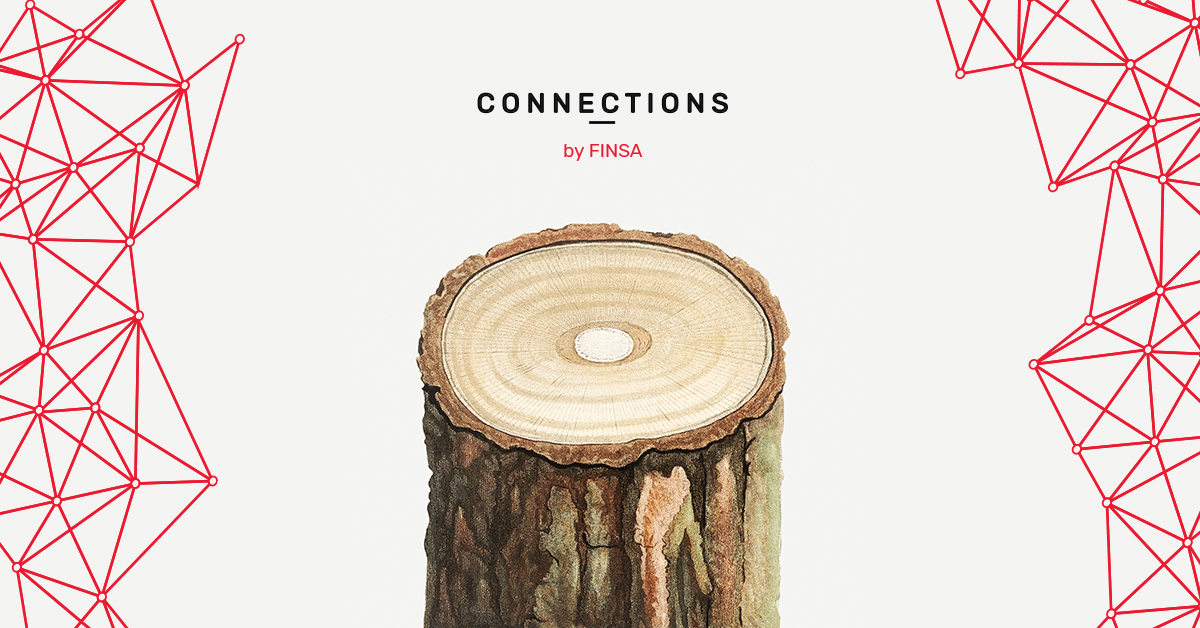His monumental steel sculptures can be found in Paris, the US, France, Romania, Italy, and Spain. Juan Garaizabal, who was born in Madrid in 1951, sees art as a journey of exploration. He is taking part in the exhibition Tienen madera* at the Álvaro Alcázar gallery, part of which was also on display at ARCO 2021.
*from the Spanish expression ‘tener madera’, meaning to ‘have a gift for.’ ‘Madera’ also means wood, which is the main material that was used to create the works in this exhibition.
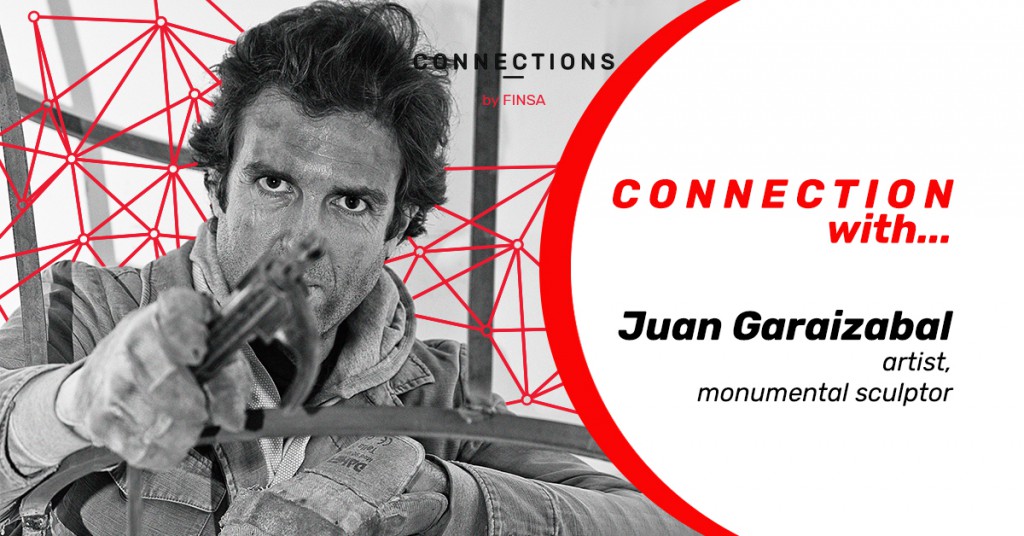 Tell us about your large sculpture in the exhibition Tienen madera. It seems to reference to a wine cellar.
Tell us about your large sculpture in the exhibition Tienen madera. It seems to reference to a wine cellar.
Cups are something I keep coming back to in my work. In fact, right now I have several on display in the centre of Paris. The idea was to join different pieces of wood to form a massive cup. I took trunks that had been cut in a square, modular fashion, almost in a matrix, and I worked on them using a chainsaw.
Creating this piece was like hand-to-hand combat because of the huge size of its pieces. The wood is what fills the cup and the steel looks like a physical limit which isn’t really a limit at all because it’s unfinished. The final piece is the first of its kind in terms of the materials used, its size, and its shape.
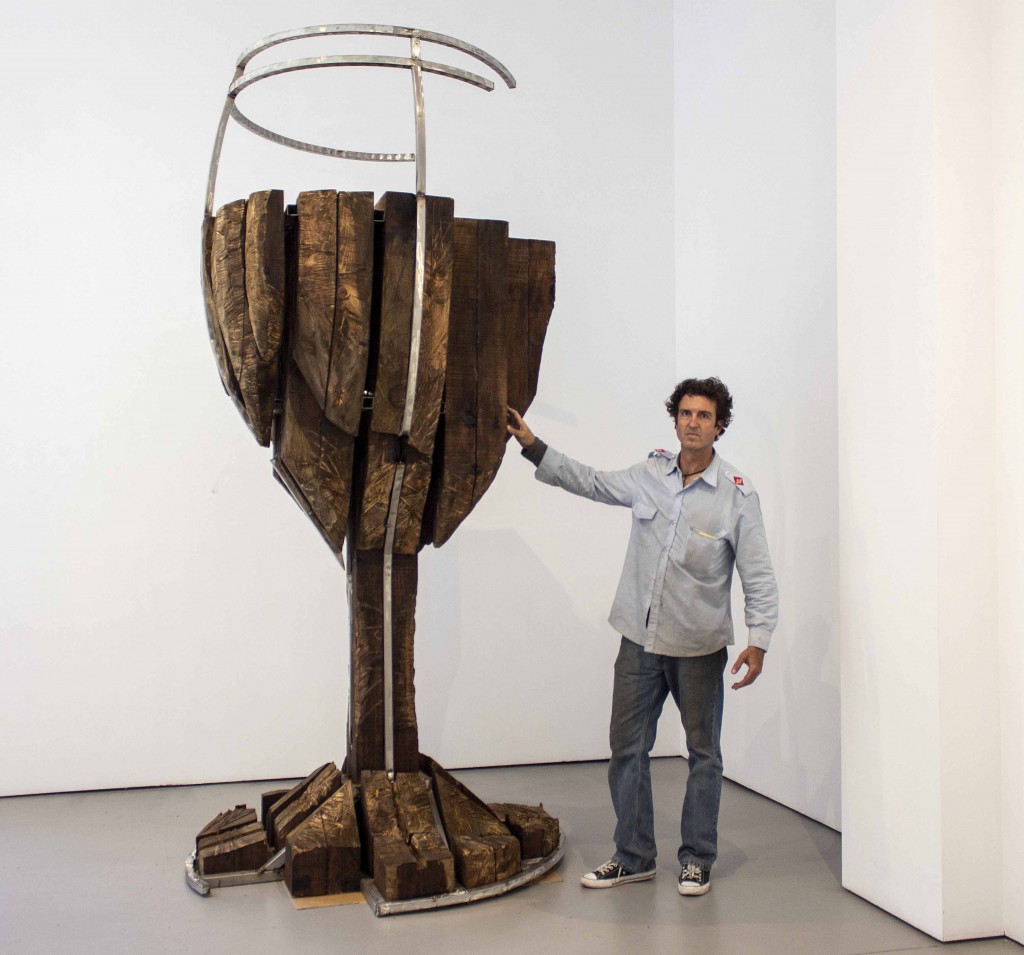
Materials play a big role in your work. For this piece, you’ve used blocks of solid wood. How important are materials to you and, in this case, the use of blocks of wood?
When you’re making art, you’re working on several different elements that you are constantly shaping: ideas, visions of what you’re trying to create, materials, what could speed up the process or slow certain phases down. For example, some textures take precedence over the ideas and sometimes, the two spheres, the material and the immaterial, feed off each other: you have an idea, you think that a particular material will help you make it happen, but in the end, you change the material to better suit of the idea.
This piece combines two materials that, together, rather than just adding to each other, multiply. Let me explain. Steel can’t be changed, but wood can be. There’s a tension between the organic and the inorganic. The piece is supposed to make you think, to make you want to possess it, see it up close, touch it…it’s supposed to fascinate you. Perhaps it’s because I’ve spent a lot of time in street markets, and therefore I know the sensations that different objects can provoke. Sometimes it’s inexplicable, you just have to go with it and feel the characteristics of the material itself: the geometry, the feel of it, the quality…and when it comes to those things, nothing beats wood.
How would you define your art? You’re well known for your works of art that are displayed in public places, but you’re multifaceted and have worked across several disciplines.
That’s true, but I’m known for that because monumental sculptures become part of people’s lives, making them more memorable. I make graphic art and I paint, [and these works are] always accompanied by sculpture. What I do could more accurately be called exploration.
[With each piece], I’m always asking myself which direction it makes sense to take. That’s my starting point. Starting from a place to which I can bring something new, from the unbeaten path, concepts that haven’t been attempted yet, and sculptural languages that haven’t been developed. This means some intellectual discomfort, a discomfort that makes your whole body hurt, but it takes you to places that then lead you to others. What I mean is that the journey isn’t always enjoyable, but the result is always something that has not yet been explored.
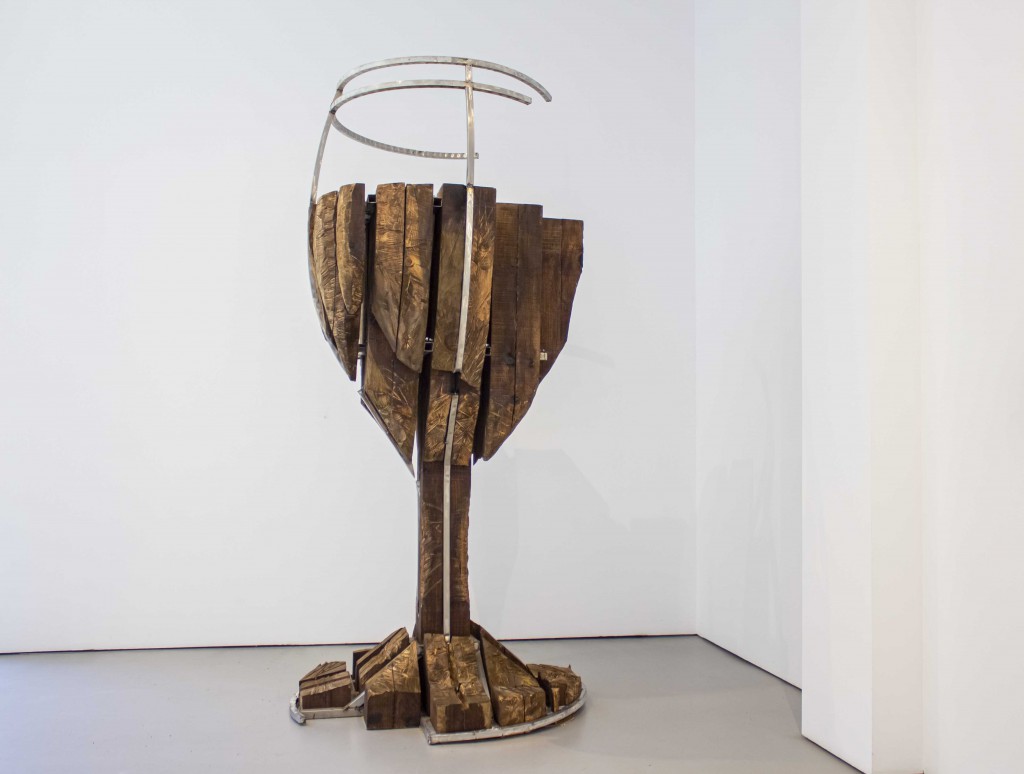
Speaking of journeys, you live between Berlin, Madrid, amd Miami. Would you say you’re a nomad?
I like solving problems and I like adventure. Everything I’ve done has been the result of a formative trip that I took when I was little during which my mother drove us around Africa and Asia. But it’s not really about where you’re going, but rather how you get there. The how is key. We drove along paths that almost nobody takes, sometimes using trucks that really needed to be fixed. That was the main idea and that’s how it connects with what I do: having an objective and seeing how I can get from one point to another. It’s very much like a journey, yes. Like saying “I want to go to Tibet by taking a path that nobody else has ever taken” and preparing everything you will need to start exploring.
Have you noticed a before and after in the art world because of the lockdowns during the pandemic?
There was a difference between what happened globally and what we experienced as artists. I continued along the path that I was already on, broadening my horizons and continuing to work. I didn’t find peace or nature [as others did] because I had already found them. I didn’t stop even for a minute. Even when I was confined to my house, I took advantage of the time to learn Chinese, and now I can speak it quite fluently.
Ver esta publicación en Instagram
Do you get more inspiration when you’re online or offline?
I’m always combining the two, because I’m always looking something up. The more something interests me, the more I want to know about it once I get home. [In a car], I prefer to sit in the passenger seat rather than drive, because then I can observe, look something up, and think all at once. It’s wonderful that nowadays you can see a bell tower off in the distance, get closer to it, ask questions, and google it, all using the same device.
It’s also true that ideas are not tied to specific moments, that they can come while you’re sleeping, while you’re in the shower. But you do need a certain amount of solitude because you have to make a space for them to filter through.
Which magazines, books, and blogs inspire you?
I find history interesting. I’ve studied French surrealism and I’ve reread existentialist works including Froth on the Daydream and A Balcony in the Forest. Literature has always been more interesting to me because it’s an activity that is quite impractical. I’m constantly searching for reflection and, above all, humour, something that I’ve found both in surrealism and existentialism. Music is also essential. Film interests me because, during lockdown, I got into images and recordings, as well as audio-visual narration. I also found that Filmin really gets me thanks to the time I’ve spent using it, especially when it comes to Italian realism. I should say that I often stop viewing something once I feel it’s given me something I can use. There are no rules when it comes to how and how much you should watch [tv or film].
Finally, I believe in social media as a form of communication. I use Instagram quite frequently. Because of its asynchronous character, people can spend time looking at your profile when they feel it’s appropriate. An artist is someone that makes you think of them, so don’t make a person think of you when you want them to. That’s something that should be reserved for special little moments.
Ver esta publicación en Instagram


